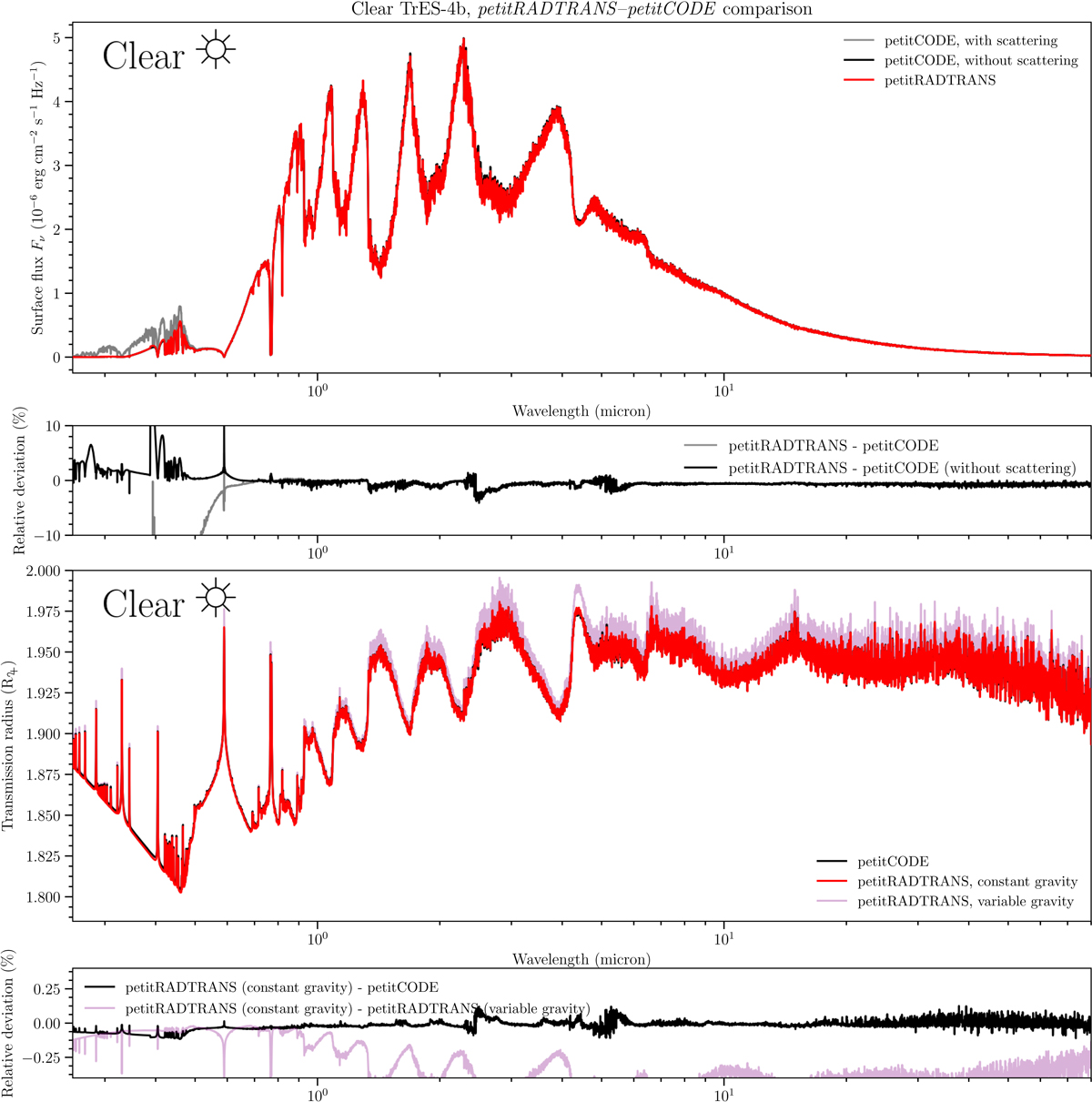Fig. 3.

Radiative transfer verification of petitRADTRANS. Uppermost panel: comparison between the emission spectra of a clear TrES-4b-like atmosphere, calculated with petitRADTRANS (red), petitCODE without scattering (black) and petitCODE with scattering (gray). The agreement between petitCODE (with scattering) and petitRADTRANS breaks down for wavelengths below 0.5 μm, because Rayleigh scattering becomes important (petitRADTRANS does not include scattering for emission spectra). Second lowest panel: comparison between the transmission spectra of the same atmosphere, calculated with petitRADTRANS when assuming a constant surface gravity (red), when assuming a variable gravity (purple), and with petitCODE, which assumes a constant gravity (black). Here, the constant gravity cases agree well also in the short wavelength range, because scattering is included for transmission spectra in petitRADTRANS. The comparison between the constant and variable gravity cases of petitRADTRANS highlights the effect of varying gravity on the resulting spectra. The panels below the emission and transmission spectra show the relative deviation of the petitRADTRANS calculations, which are shown as red lines in the spectral plots, to the other cases.
Current usage metrics show cumulative count of Article Views (full-text article views including HTML views, PDF and ePub downloads, according to the available data) and Abstracts Views on Vision4Press platform.
Data correspond to usage on the plateform after 2015. The current usage metrics is available 48-96 hours after online publication and is updated daily on week days.
Initial download of the metrics may take a while.


